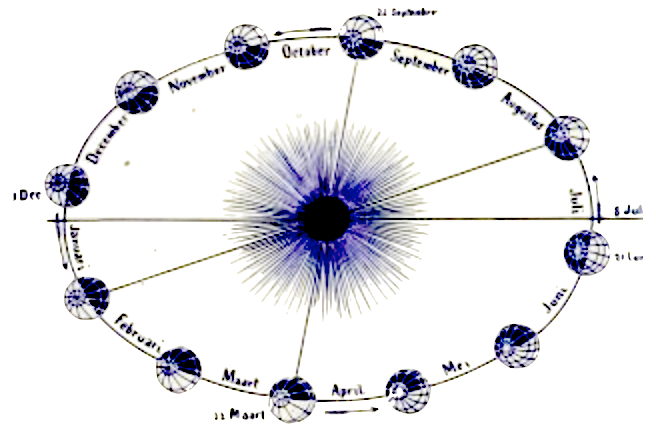40 The error has no root in reality
LG40
Jesus said:
A vine was planted outside the father
but because he does not stand strong,
he will be pulled out and destroyed with root.
The previous logion showed compassion for the scribes as human beings, because the scribes alienate themselves from the Source within themselves in their great zeal. Yes, that’s a shame for them.
This logion is about the sciences themselves, and about the evil that they can do. It is about thoughts, dogmas, etc. that start to lead a life of their own independently of reality, and therefore have no roots in reality. They are planted “outside the Father.”
Thoughts about “the Father” who have started to live their own life, so that they have become detached from the original emotion, are the hallmark of fundamentalism. They have the foundation in themselves, and not in “the Father.” That kind of fundamentalism kills the heart, kills love, and therefore needs to be radically uprooted in order to reconnect life, action in the world, with the source of love, “the Father,” which is present in ourselves.
Who is ‘the Father’ here? In Aramaic, the language that Jesus spoke, the word that is usually translated as “Father” actually means something else. It literally means “Birth giver.” That word is neuter, not masculine or feminine.
You can also translate it as ‘Source of being’. There is a source and all that exists flows from it. Reality flows like a river from a source. That is the image of creation that fits within Gnostics.
We are right here in the middle of the problem of appointment. That Source of Being, so is the Gnostic view, falls outside of every description. The Source is still unformed, the possibility of being that has not yet taken shape, which precedes all forms. So: if we describe reality as a river, flowing from a source, then that is also just a ‘way of speaking’. It is no more than an image. And that image is not reality itself.
The Gospel of Philip (10) says about this:
The names that are used to describe cosmic affairs are often very misleading, because while they derive their meaning from what exists, they focus on what does not exist. Whoever hears “God” does not think of what really exists, but thinks of something that does not exist. So it is with ‘the father’ and ‘the son’ and ‘the holy spirit’ and with ‘life’ and ‘light’ and ‘resurrection’ and ‘church’ and everything else: one does not think about what exists but about what does not exist, unless one has come to know the existing.
So that’s the problem: we try to name the indescribable, and then we start to believe in the words. The story replaces the real thing.
Buddhism has a beautiful expression for this: “The finger pointing at the moon is not the moon.” But the problem is that people are so easily inclined to think that it is really about the finger, and not about the moon. Then church, faith, and spiritual traditions become more important than what they refer to, and thus “the Father,” the source of all life, becomes invisible.
The scribes mentioned in the previous logion did not enter. They stayed outside.
Going inside is here for: looking for the experience within you. Only in experience can one get to know the really existing.
But, in order to be able to go inside, to know the source of being in your experience, all those images must first be released. The absolute truth of all those images must shatter. The images must become images again and not the truth itself. And you will indeed be shocked, as Logion 2 said, if you see how much those beautiful images can actually keep you from Source. And how fundamentalist scribes, who know the images and stories, but exclude the experience, can keep you from that Source by demanding that you believe in their images and stories, as if those images and stories are reality themselves.
Many stories are told about the Source. And that is not at all wrong. Philip says:
The truth was given many names in the world because it is impossible to know without names. However, the truth itself is one. It manifests itself in many forms for the sake of us being taught in love about this one under many names.
The stories that people tell about ‘the fixed’ are just stories, no matter how beautiful. The literal belief in such a story is called “error” in Gnostics. The vine that was planted outside the Source, that is, the belief in the images and stories that replaces the experience, yes, it must be released. Only in the void of not knowing, yes, even of unbelief, can the Source be experienced. And that could sometimes cause a considerable inner storm of images.
Tags: BM Bram Moerland lg40